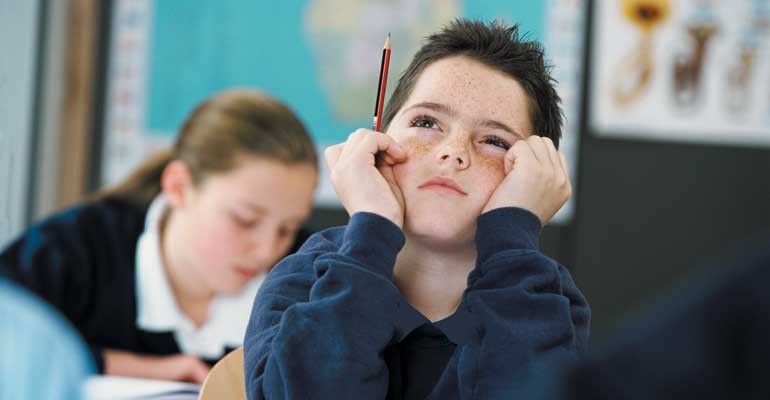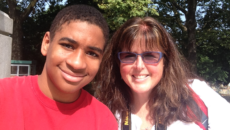Henry is fidgety and distractible during classroom activities, according to his second-grade teacher. In gym class, he gets cranky and lashes out at classmates who “are yelling at me and telling me what to do.”
His mother has noticed similar behaviors at home. When he’s doing homework, she says, “he uses every little sound as an excuse to delay getting down to work. Even the dishwasher distracts him, though the kitchen is on the other side of the house. He just can’t sit still.”
Henry’s behavior is confusing, because while some of it suggests that he might have Attention Deficit Hyperactivity Disorder (ADHD), that’s not the whole story. In fact, Henry was diagnosed with ADHD, but an audiologist has determined that the boy also has Auditory Processing Disorder, or APD.
While APD isn’t as well known as ADHD, it’s becoming increasingly common. Roughly 7% of all children have some type of auditory processing difficulty, a condition that often shows up alongside ADHD, Sensory Processing Disorder (SPD), and other neurological problems.
Because these disorders may result from conditions such as institutionalized care, prenatal malnutrition, and fetal exposure to alcohol, the percentage of children who experience them may skew higher in the adoption community. But what is APD, exactly?
What they hear
At its most general, APD is a glitch in the brain’s ability to filter and process sounds and words. An APD child doesn’t have difficulty hearing — in fact, in most cases, her hearing is good. Rather, her brain perceives sounds incorrectly, affecting her ability to distinguish between similar sounds (like da and ga).
Some children with APD also have trouble screening out background noise. They pick up bits and pieces of surrounding sounds and perceive them as equally important, so their brain must work very hard to listen to a conversation and comprehend it. Even an echo in a gymnasium or the hum of an air conditioner can interfere with conversation.
It’s like listening to the car radio with interference from other stations garbling the reception. A child with APD may try so hard to understand what’s being said that she forgets parts of the conversation or doesn’t pick up the nuances or subtleties of words.
The cause
As with so many developmental disorders, the underlying causes of APD are not fully understood. Experts debate whether heredity or environment or both are responsible for the condition.
While the human auditory system is fully developed at birth, auditory pathways don’t mature until age 10 to 12. Because of this, early influences — such as poor prenatal nutrition, a birth mother’s exposure to cigarettes or alcohol, childhood malnutrition, and chronic ear infections — may negatively affect auditory processing.
Children adopted from an orphanage setting, where they may have experienced inadequate physical and emotional nurturing, are considered to be at greater risk for APD and other processing disorders.
Other risk factors include premature birth, low birth weight, Lyme disease or other brain infections, closed head injury, and exposure to low levels of heavy metals, such as lead or mercury. The good news is that, because the auditory pathways continue to develop up until adolescence, APD is highly responsive to early intervention.
Three disorders in one
APD comprises three conditions that often overlap but may occur in isolation, says Jack Katz, M.D., a pioneer in the field. They are: sound discrimination, auditory memory, and language processing problems.
Sound discrimination problems. When children learn to talk, they mimic the sounds they hear to produce speech. A child with APD may not speak clearly, using similar rather than exact sounds (dat instead of that; free instead of three) long after peers have corrected themselves.
Children with faulty sound discrimination will often run words together and drop word endings and unemphasized syllables when speaking. Reading and spelling may also be affected.
Auditory memory problems. This part of the disorder makes it difficult for a child to memorize numbers and facts, and it also affects reading and language skills.
Children with auditory memory problems typically take a long time to learn their phone numbers and addresses, and have difficulty remembering math facts. Complicated verbal instructions and lists are similarly tough to retain.
Language processing problems. This component of APD is the most troublesome. It affects a child’s ability to understand what’s being asked of him and to socialize with peers.
A child with this cognitive glitch has trouble taking oral tests and becomes confused reading or telling stories with lots of characters and events. He’ll often pass up a chance to hold a conversation because of the time it takes to process words being spoken and to formulate responses.
Christina suffered from all three elements of APD. She never sang as a small child, even though she clearly enjoyed listening to people singing. “Christina could never put everything together — the words, the rhythms, the tunes — well enough to sing along,” says her mother, Tricia.
“Her hearing was fine — exceptional. But put her into a circle of kids singing nursery rhymes and playing spoons and tambourines, and all she wanted was to get away!” When Christina was finally diagnosed with APD, Tricia was relieved.
Diagnosing APD
Not all language problems are due to APD, and not all cases of APD lead to language and learning problems,” cautions Teri James Bellis, Ph.D., author of When the Brain Can’t Hear. APD isn’t diagnosed by checking off a list of symptoms, but by running a battery of tests, performed by an audiologist who monitors the child’s hearing.
A child listens to words and sentences while background noise is slowly increased and to instructions spoken at increasingly faster speeds, to determine if the ability to listen decreases.
A child should be at least age 6 or 7 before undergoing testing. “The symptoms you commonly see in a 3- or 4-year-old are sound sensitivities and difficulties discriminating between sounds, which you’ll hear in their speech,” says Wendy Tepfer, a speech and language pathologist in New York City. “They need to work with a speech pathology expert.”
When a child reaches school age, however, APD may begin to compromise academic success. “At that age, I would recommend evaluation for APD, because now, it’s not only the language but also his performance in the classroom,” advises Tepfer. “To manage the disorder, the student may need remediations other than speech and language therapy. A full evaluation will help you know what those are.”
The treatments
APD can be treated from childhood through adolescence — when the auditory pathways stop developing — and even later, although experts agree that the earlier the diagnosis and treatment, the better. A combination of professional, school, and home therapies is most effective.
PROFESSIONAL HELP — Treatment includes a variety of exercises that target specific auditory deficits. Therapy can range from computer-assisted software programs like Fast ForWord and Earobics to one-on-one training with a speech and language therapist. Some common approaches:
- To overcome sound-discrimination problems, a professional trains the child’s brain to differentiate sounds — first in a quiet environment, then with increasingly louder background noise.
- To sharpen auditory memory, an audiologist uses sequencing routines — having the child repeat a series of numbers and directions — to exercise her listening skills.
- To manage language-processing problems, a therapist will train and encourage a child to ask a teacher, adult, or peer to repeat or rephrase an instruction or comment. Therapist and child might also develop a customized note-taking system that enables her to capture information in the classroom.
AT SCHOOL — Classroom accommodations can include:
- Improving acoustics — shutting a door, closing a window, adding a rug — to help a child focus on what the teacher is saying.
- Seating a child in the front of the classroom, away from students who might be disruptive, to enhance his ability to listen.
- Asking a teacher to face the child, speak slowly, and use simple sentences and write instructions on a blackboard when giving assignments, to help him retain information.
AT HOME — These strategies will increase your child’s ability to listen:
- Before you start a conversation, be sure your child is ready to listen and finished with what she was doing. Also, face her directly, and make eye contact.
- Don’t start a conversation when she’s in another room, watching TV, or listening to music.
- Speak slowly, in short and simple sentences; pause between ideas.
- Encourage your child to ask you to repeat something that she doesn’t understand.
Christina, now 11, has learned to use the latter strategy with friends, parents, and teachers. “It’s been successful for her,” says Tricia. Eight years of speech and language therapy have helped her daughter accomplish many social and academic goals.
But Christina did something that her mother thought she’d never achieve — she joined the chorus. “There she was, onstage, at the parents’ day assembly, singing her heart out, and playing drums!” says her mother. “She was so proud of herself, and I was the only mom with tears streaming down my cheeks.”


